Happy February! This newsletter’s an especially long one because January was so especially long that I’ve amassed a lot to say.
Let’s get into it:
February Book Selections
Reading recommendations for the month ahead include:
Lolita by Vladimir Nabokov (1955) — Per the January 2024 newsletter, “2023 was the year I finally got over the ick factor of John Gall’s 2005 reissue cover — and the novel’s content, for that matter — and read Lolita (1955). What a book.”
ICYMI: This classic from Russian-American novelist Vladimir Nabokov delves into the perverted first-person perspective of Humbert Humbert, a French literature professor who develops a fixation with 12-year-old Dolores Haze, aka: Lolita. The novel begins with a foreword from John Ray Jr., a fictional editor of psychology books. It establishes the fact of Humbert’s fate, of his death. Ray explains: “Lolita, or the Confessions of a White Widowed Male, such were the two titles under which the writer of the present note received the strange pages it preambulates. ‘Humbert Humbert,’ their author, had died in legal captivity, of coronary thrombosis, on November 16, 1952.”
This introduction creates a framing device similar to the start of Stoner (1965), in which John Williams writes: “When he died his colleagues made a memorial contribution of a medieval manuscript to the University library…An occasional student who comes upon the name may wonder idly who William Stoner was, but he seldom pursues his curiosity beyond a casual question.” In both instances, these opening lines puncture traditional notions of plot. By revealing his novel’s outcome from its incept, each author draws focus toward details, toward prose, in the subsequent pages.
Lolita moves into Humbert’s mind after this foreword, tracing his childhood in France and, notably, the death of his first love, Annabel Leigh, from typhus. This event developmentally stunts Humbert, spurring his sexual fixation with girls aged nine to 14 years old. His immigration to the small New England town of Ramsdale during World War II brings him to Lolita, “the daughter of his landlady, whom he marries with murderous intent,” as Charles J. Rolo describes in his original 1958 review. As I write in the January 2024 newsletter, Lolita stands the test of time thanks to “Nabokov’s mastery of language, his subtle use of alliteration and double entendres to create a simmering sense of unnerving sexuality. (‘Sitting on a high stool, a band of sunlight crossing her bare brown forearm, Lolita was served an elaborate ice-cream concoction topped with synthetic syrup. It was erected and brought to her by a pimply brute of a boy in a greasy bow-tie who eyed my fragile child in her thin cotton frock with carnal deliberation.’).”
My Heavenly Favorite by Lucas Rijneveld (2024) — After reading Lolita, move on to nonbinary Dutch novelist Lucas Rijneveld’s latest book, My Heavenly Favorite (2024), which asks: “What if Humbert Humbert were a veterinary surgeon on Lolita’s family farm in 2005? And what if Lolita were nonbinary?” To preview the January Book Review:
Translated from Dutch by Michele Hutchison, My Heavenly Favorite takes the form of a 330-page confessional. Told in the second person, it adopts the perspective of “Kurt,” an agricultural veterinarian who operates as an early-aughts answer to Vladimir Nabokov’s Humbert Humbert. Kurt works for a family haunted by loss, by a missing matriarch and deceased child, the latter a loss at the hands of a hit and run. Its remaining members include the farmer, his late teenage son, and his 14-year-old daughter, all unnamed. Kurt forms a fixation with and begins to groom the unnamed girl, with the novel itself taking the form of a letter to her, to the ladies and gentlemen of the jury, after he faces conviction.
Stylistically, My Heavenly Favorite operates as a direct descendent of Nabokov’s Lolita (1955). Both novels inhabit the headspace of a sick narrator, a sexually stunted predator, through the prism of stunning prose. But Rijneveld takes Nabokov’s narration a step further by eliminating paragraph breaks and periods a la Vigdis Hjorth. As I write in my review of Hjorth’s Will and Testament (2016), “commas substitute periods, shaping the looping hyper-fixation that comes to define of [narrator] Bergljot’s stream of consciousness (‘I tried to open my mind towards Lars so that his harmless dreams could flow into mine, I tried to suck the dreams out of his sleeping body, but it didn’t work, there was no way in, I was trapped inside myself.’).” The same characterization applies to Kurt’s narration in My Heavenly Favorite, with the sentences that shape his “looping hyper-fixation” double the length by comparison.
The Travelers by Regina Porter (2019) — A PEN/Hemingway finalist, this underrated novel from Iowa grad Regina Porter traces two interconnected American families, one Black and one white, from the 1950s through the 2000s. It opens with a playbill-style rundown of its cast of characters, a necessary index as the saga splays out decade over decade, wedding the personal and political. As Clare Clark writes in her 2019 review for The Guardian:
The novel begins conventionally enough: Agnes Miller is a cherished only child coming of age in Jim Crow Georgia. But when Agnes and her date, both black, are pulled over late at night by a white policeman on the aptly named Damascus Road and Agnes is taken aside for “questioning”, her ordeal, never discussed or acknowledged, detonates a silent bomb beneath her story, fracturing not only her life and the lives of those around her but narrative form itself.
From that point on Porter’s tale abandons chronology to freewheel through time and place, in a series of seemingly random vignettes that loop through and around one another like knitting, veering off into new patterns, picking up dropped stitches of plot. Children reappear as lovers, lovers as negligent grandparents. Peripheral characters are brought abruptly into the foreground, new ones arrive without introduction to take centre stage. Events are revealed in screenplay form or through exchanged letters.
Parakeet by Marie-Helene Bertino (2020) — We have now reached the Valentine’s Day portion of the newsletter. This lesser-known novel from writer Marie-Helene Bertino focuses on a woman in her mid-thirties about to get married. As she decompresses in a Long Island hotel, warming cold feet in the week leading up to her wedding, a parakeet, her dead grandmother in disguise, arrives to haunt her. As journalist Bess Kalb writes in her 2020 review for The New York Times:
What is Parakeet about? It’s about an ambivalent bride. It’s about PTSD, grief, forgiveness, bad mothers, womanhood, monogamy and the nature of time itself. It’s about being a woman trapped by her subconscious and social conventions. It’s a Homeric quest to reclaim control over the heroine’s own life and sanity.
It’s also a story prone to soap-operatic revelations and Big Events; but the events are presented in a way that’s more matter-of-fact than melodramatic, and the effect is absurd, and at times deeply funny. The result is a story that is disquieting and darkly comic and vulnerable and true. I laughed throughout; I winced more.
Cocktails with George and Martha: Movies, Marriage, and the Making of Who’s Afraid of Virginia Woolf? by Philip Gefter (2024) — Nothing says Valentine’s Day like a deep dive into the ultimate marriage movie, Who’s Afraid of Virgina Woolf? (1966). If you’ve been here for a while, you know I made this book my entire personality last spring. As I write in the 2024 March Book Review:
This book has everything! Mike Nichols perfecting the art of practicing “social jiu jitsu” on unsuspecting souls (aka: cementing himself as the most Scorpio Scorpio who has ever Scorpioed), Elizabeth Taylor subtly demanding thousands of dollars in diamonds (as she should), and Richard Burton stressing about his acne scars (so valid, king). Cocktails with George and Martha, like Ninety-Nine Glimpses of Princess Margaret (2017), which I discussed in the 2023 November newsletter, reads “like a top-tier grocery store aisle issue of People.”
The narrative teases out how Who’s Afraid of Virginia Woof? — first as a play, then as a film — became a lightning rod in the mid-sixties cultural zeitgeist. For those of you unfamiliar with both versions, per film director Mike Nichols, the story “is about a couple [George and Martha] who comes home late after a party. She has invited another couple [Nick and Honey] over for a nightcap. They drink and they argue and then the guests go home.” Over the course of an extended nightcap from hell, George, Martha, and their younger counterparts toe the line between truth and illusion, cracking open the cores of their respective relationships. Per Cocktails with George and Martha author Philip Gefter: “While unique as characters, George and Martha are representative of any married couple in that they are always aware of the private subtext playing out below the public face of their relationship.”
Gefter traces playwright Edward Albee’s development of the script in 1950s Greenwich Village to the play’s Tony-winning — and Pulitzer-snubbed — Broadway run. The bulk of the book then shifts to focus on the 1966 film, from casting to production to release. Gefter reanimates the environment of the set, a cocktail of strong personalities — including a pre-The Graduate (1967) Mike Nichols as director, Brooks Brothers-sporting square Ernest Lehman as producer, and the couple of the decade, Richard Burton and Elizabeth Taylor, as George and Martha — fixated on their respective versions of success.
Upcoming Content to Consume
New Beverly Cinema: Free Community Screenings (Dates: 2.1-2.4) — The New Bev has announced a series of four free community screenings to offer a little escapism to the city of Los Angeles. Starting today, the line-up includes The Matrix (1999), West Side Story (1961), North by Northwest (1959), and That Darn Cat! (1965). Seating is on a first come, first serve basis!
Film Forum and Village East: Groundhog Day (1993) (Date: 2.2) — Kick off the month with this Bill Murray classic at Film Forum or Village East! ICYMI: Groundhog Day (1993) centers on Phil Connors (played by Murray), a persnickety weatherman who makes his annual pilgrimage to Punxsutawney, Pennsylvania for its annual Groundhog Day ceremony. He gets trapped in a time loop, and ends up reliving the same day over and over again. Per Time Out: “How would it feel to wake up to the same day every day? Would you crack up at the sheer tedium of it all? Cynically exploit others (they don't know they’re trapped in a time warp) with what you learned about them the day before? Or use the situation to better yourself? That's the dilemma facing…Phil.”
Village East: Moonstruck (1987) (Date: 2.3) — Village East’s annual screening of Moonstruck (1987)! As I write in the February 2024 newsletter:
This movie has everything. Cher. The Met Opera. Brooklyn Heights in the 80s. Italian food. Young Nic Cage in a wifebeater AND a tux.
Moonstruck tells the story of Loretta Castorini (played by Cher), a 37-year-old widow who, at the start of the film, seems to have found love at last despite her track record of bad luck. While caring for his dying mother in Sicily, Loretta’s fiancé, Johnny Cammareri (played by Danny Aiello), asks her to invite his estranged brother, Ronny (played by Nicolas Cage), to their wedding. Loretta goes to appeal to Ronny at his Brooklyn Heights bakery, and the lines between love and hate begin to blur.
If you can’t make it to Village East on Monday, Syndicated has plans to screen the film on 2.12 and 2.16 too!
McNally Jackson Seaport: Sarah Chihaya & Elif Batuman (Date: 2.4) — At 6:30 PM on 2.4, critic and editor Sarah Chihaya will discuss her forthcoming memoir, Bibliophilia (2025), alongside Elif Batuman, author of The Idiot (2017) and Either/Or (2022), at McNally Jackson Seaport. Per the site:
Books can seduce you. They can, Sarah Chihaya believes, annihilate, reveal, and provoke you…Sarah calls books that have this effect “Life Ruiners”.
Her Life Ruiner, Toni Morrison’s The Bluest Eye (1970), became a talisman for her in high school when its electrifying treatment of race exposed Sarah’s deepest feelings about being Japanese American in a predominantly white suburb of Cleveland. But Sarah had always lived through her books, seeking escape, self-definition, and rules for living. She built her life around reading, wrote criticism, and taught literature at an Ivy League University. Then she was hospitalized for a nervous breakdown, and the world became an unreadable blank page. In the aftermath, she was faced with a question. Could we ever truly rewrite the stories that govern our lives?
Bibliophobia is an alternately searing and darkly humorous story of breakdown and survival told through books. Delving into texts such as Anne of Green Gables (1908), Possession (1990), A Tale for the Time Being (2013), The Last Samurai (2000), Chihaya interrogates her cultural identity, her relationship with depression, and the intoxicating, sometimes painful, ways books push back on those who love them.
You can reserve a seat, alongside a copy of the memoir if you wish, here!
Metrograph: The Conversation (1974) (Dates: 2.8-2.9) — My favorite watch of 2024, The Conversation (1974), aka: adventures of a Catholic wiretapper, “opens over a bustling Union Square in San Francisco. Jazz hums and bleeds into garbled audio. The image becomes clearer. Filmed documentary-style, a couple (played by Cindy Williams and Frederic Forrest) weaves in and out of the frame, between mimes, musicians, hedges. Bits of their conversation — the conversation — crash over, fade behind, the sounds of the square. Their state of surveillance becomes apparent, a job at the hands of expert wiretapper Harry Caul (played brilliantly by Gene Hackman). The narrative unravels from, loops back to, this point, as Harry, faced with delivering the tapes to an executive known as “the Director” (played by Robert Duvall), begins to fear for the couple’s life,” as I write in the March Movie Review.
Metrograph will screen the film over the course of two days with an introduction from Ryan J. Sloan and Ariella Mastroianni on 2.8. You can check out showtimes here!
Film Forum: It Happened One Night (1934) (Date: 2.9) — Catch this pre-Code classic that put Frank Capra and Columbia Pictures on the map at Film Forum this month!
The original rom com, It Happened One Night (1934) centers on Ellie Andrews (played by Claudette Colbert), an heiress looking to escape her millionaire father, who’s in the midst of forcing her into an annulment. She hops on a Greyhound bus, where she meets Pete Warne (played by Clark Gable), an unemployed newspaperman. Against the backdrop of the Great Depression, the pair sets off on a hitchhiking exhibition that Peter plans to turn into a story, and sparks start to fly.
Stars Gable and Colbert dragged their feet throughout filming, but the picture went on to take home all five major Oscars — Best Picture, Best Director, Best Actor, Best Actress, and Best Adapted Screenplay — at the 1934 Academy Awards. Pauline Kael hails it as “the Annie Hall (1977) of its day…[making] audiences happy in a way only a few films in each era can do.”
The Paris Theater: Casablanca (1942) and Amélie (2001) (Date: 2.14) — On Valentine’s Day, The Paris Theater will deliver an ideal double feature: Casablanca (1942) and Amélie (2001).
Per the site, with Casablanca, “Academy Award winners Humphrey Bogart and Ingrid Bergman light up the screen in one of the most enduring romances in movie history. Rick Blaine (played by Bogart) owns a nightclub in Vichy-controlled Casablanca, frequented by refugees desperate to escape German domination. Despite the ever-present human misery, Rick manages to remain uninvolved in World War II now raging across Europe and Northern Africa. But all that changes when Ilsa Lund (played by Bergman) walks through the front door of Rick's club.” Meanwhile, “a waitress in a Montmartre, Paris bar, Amélie observes people and lets her imagination roam free. One day, she suddenly finds her purpose in life: to solve other people’s problems. We follow her around a lovingly and vividly photographed Paris of saturated colors, as she engineers offbeat solutions to better her deserving co-workers, relatives and neighbors’ lives.”
Casablanca will play at 6:15 PM, followed by Amélie at 8:45 PM. You can buy tickets here and here!
Metrograph: Wild at Heart (1990) (Date: 2.14) — This year, Metrograph has selected the David Lynch classic for its annual Valentine’s Day show, and cinematographer Frederick Elmes has provided a 35mm print for the screening. Per the site: “Laura Dern and Nicolas Cage are Sailor and Lula, hotpants lovers on the lam, in Lynch’s fever dream road trip through a sleazy South of stick-up men, heavy metal concerts, and pornos, Texas-style…A perfect date for a special someone, someones, or just your own special self, with the intimate confines of the Commissary and a cozy date with cocktails just a few steps away once the movie’s over.”
Syndicated BK: 2025 Oscar Nominated Shorts (Dates: 2.14-2.16) — If you’re a New York-based subscriber in the city over President’s Day weekend, head to Syndicated to catch a glimpse of the film shorts nominated in the Live Action, Animated, and Documentary categories at this year’s Oscars.
Film Forum: When Harry Met Sally (1989) (Date: 2.15) — After three consecutive months of flagging When Harry Met Sally (1989) screenings, I promise I will not breathe a word of this film again until next December. This one, timed for Valentine’s Day weekend, will include an introduction from Ilana Kaplan, author of Nora Ephron at the Movies (2024).
Vista Theater Hollywood: Vertigo (1958) (Dates: 2.14-2.20) — A Hitchcock classic for the LA subscribers! What Jack Moffitt in his original 1958 review for The Hollywood Reporter calls “a super-tale of murder, madness, and mysticism,” Vertigo (1958) stars Jimmy Stewart as former San Francisco police detective Scottie Ferguson. Retired on the account of his acrophobia, Scottie gets hired to follow, then forms an obsession with, his old friend’s wife (played by Kim Novak). As Moffitt explains: “Hitchcock tells three distinct types of story in this one picture without a moment of disharmony or audience confusion. The first part of the film is given a fascinating editorial tone of the supernatural. The second act is told from the point of view of the hero’s obsession; the finish is a bang-up straightaway love and detection story.”
Village East: The Philadelphia Story (1940) (Date: 2.17) — Reprising another old school rom com pick from December! [ICYMI: The Paris Theater screened It Happened One Night (1934) and The Philadelphia Story (1940) as part of its December line-up.]
Per Criterion: “The intoxicating screenplay by Donald Ogden Stewart pits the formidable Philadelphia socialite Tracy Lord (Hepburn, at her most luminous) against various romantic foils, chief among them her charismatic ex-husband (Cary Grant), who disrupts her imminent marriage by paying her family estate a visit, accompanied by a tabloid reporter on assignment to cover the wedding of the year (James Stewart, in his only Academy Award–winning performance). A fast-talking screwball comedy as well as a tale of regret and reconciliation, this convergence of golden-age talent is one of the greatest American films of all time.”
Film Forum’s Tales from The New Yorker Series (Opening Date: 2.21) — This month, Film Forum will launch a series dedicated to “the magazine’s first century with a slate of films inspired by fiction and reporting from its pages, and by the acclaimed writers who helped define its distinctive voice and style. Kicking off on the 100th anniversary of The New Yorker’s debut issue, the festival opens with the magazine’s editor, David Remnick, in attendance at the first screening. Select screenings will feature introductions by writers and editors, as well as by special guests to be announced,” per the site.
The line-up encompasses a wide swath of films, including Citizen Kane (1941), Meet Me in St. Louis (1944), The Red Badge of Courage (1951), In Cold Blood (1967), The Swimmer (1968), The Unbearable Lightness of Being (1988), The Hours (2002), and Brokeback Mountain (2005), among others.
The festival runs through 3.6. You can check out showtimes here!
The Academy Museum’s Oscar® Sundays Series: The Holdovers (2023) in 35mm (Date: 2.23) — Another one for LA-based subscribers! The Academy Museum has an ongoing series dedicated to past Academy Award Honorees. This winter, it celebrates the work of Black artists with a February line-up that includes Get Out (2017), Judas and the Black Messiah (2021), and, my personal favorite pick, The Holdovers (2023), for which Da'Vine Joy Randolph rightfully won the Best Supporting Actress Oscar last year, in 35mm.
As I write in my review of the film: “What another Letterboxd rando describes as ‘The Shining if it was a heartwarming comedy,’ The Holdovers centers on Stoner-coded classics professor Paul Hunham (played by Paul Giamatti) who teaches at New England boarding school Barton Academy in 1970. Firm in his principles and standards, Paul finds himself despised by students and staff, under fire for refusing to kowtow to high-profile donors. As winter break begins, he gets stuck supervising a group of students unable to return home for the holidays (aka: ‘holdovers’). Slowly, unlikely connections form between Paul, loner student Angus Tully (played by my new age inappropriate crush, Dominic Sessa), and the school’s head chef, Mary Lamb (played by Randolph).”
You can check out the full series line-up here and get tickets for The Holdovers, playing at 7:30 PM on 2.23, here.
McNally Jackson Seaport: Notes Night (Date: 2.27) — This upcoming event celebrates the launch of Notes, the first book collaboration between Dirt and Night Gallery.
Per the site: “A tribute to the humble iPhone note, the collection features 100 phone notes from 100 creative contributors. Ranging from packing lists to unsaid romantic confessions, Notes shows the full spectrum of human experience encapsulated in one irreplaceable app — dark mode, of course. Dirt editor Daisy Alioto and Night Gallery founder Josh Zoerner will discuss the importance of this modest app and the process of putting the book together. Notes contributors Nick Susi, Leah Abrams, and Grace Robins-Somerville will read selections from the book. Drinks and mingling to follow!”
Attendees have the opportunity to email in an anonymous screenshot from their own Notes app for display during the event. It starts at 6:30 PM, with tickets priced at $30 to include the book, a drink, and a print out of the note you submitted to take home. You can RSVP here!
Miscellaneous Musings
LA Forever ❤️ — I sent a note to subscribers when the wildfires first broke, but, to repeat myself, if you’ve been here for a while, you know I grew up in Southern California. Seeing this climate crisis ravage a city that helped raise me, that has remained at the core of my family for over a century, breaks my heart. My aunt and uncle lost their home of nearly 30 years, and it’s been surreal to watch spaces I inhabited as a child get incinerated over the internet. Alana Johnson of Alanaland has compiled a rundown of ways to help locally and from afar, including links to a comprehensive list of GoFundMes and this regularly updated resource spreadsheet from Mutual Aid Network.
On a literary level, for its 1.12 Sunday newsletter, Los Angeles Review of Books compiled “a collection of pieces from the past 14 years” tied to the city and its position in the collective consciousness, viewable here. One of the most poignant, well-crafted pieces I’ve read about the fires themselves comes from literary critic and UCLA professor Anahid Nersessian for London Review of Books. In her essay, “Under the Santa Anas,” Nersessian enlivens the vivid landscape of Southern California, blends the personal with the historical, and addresses the growing breach between the American people and politicians on both sides of the aisle. She writes:
Often the Santa Anas pass without incident if not without notice. In the right conditions, though, they can be catastrophic. LA is an artificially lush environment, as densely packed with plant life as it is with people. There are the natives — scrubland plants and small trees collectively referred to as chaparral, including yarrow, manzanita, yucca — and the interlopers, such as the eucalyptus, pepper and palm trees brought to the area by its colonisers. There is pink bougainvillea, purple sage and sprawling rosemary. In the spring, there are small orange poppies along the roadside, alone or in bunches, and huge Matilija poppies that resemble fried eggs, their white petals flayed open around bright yellow stamens.
All this beauty is tinder…Christopher Isherwood called Los Angeles ‘perhaps the ugliest city on earth.’ People from New York, like me, are meant to loathe it. But to me it is the most beautiful city in the world. It is a city of working people and it feels like one. Apart from a few sealed-off enclaves such as Bel Air or Hidden Valley, even the toniest areas of LA have a large share of middle-class or low-income residents, although the rising cost of living and the unhinged real estate market are driving more and more people beyond the city limits. Ben Affleck evacuated his home in Pacific Palisades on Wednesday but so did the retirees, surfers and young families living in Palisades Bowl, a mobile home community, where units cost $1200 a month. The Bowl was obliterated.
Mike Davis warned in Ecology of Fear (1998) that ‘megacities like Los Angeles will never simply collapse and disappear. Rather, they will stagger on, with higher body counts and greater distress, through a chain of more frequent and destructive encounters with disasters of all sorts.’ Joan Didion, in Slouching Towards [sic] Bethlehem (1969), wrote that ‘Los Angeles weather is the weather of catastrophe, of apocalypse’, a fitting accompaniment to ‘the quality of life in Los Angeles...its impermanence, its unreliability’. Octavia Butler, born in Pasadena in 1947, in her 1993 novel, Parable of the Sower, describes enormous wildfires erupting in Los Angeles on 1 February 2025, the fatal byproduct of climate change and government corruption…
On Thursday, while LA burned, presidents gathered in Washington, DC, for the funeral of Jimmy Carter. It was a convivial affair. Sitting in a church pew behind the waxy Joe Biden, Barack Obama and Donald Trump grinned at each other and cracked wise, like two stoned schoolboys…Meanwhile, in Los Angeles, a four-year-old girl asked her mother why it was snowing. The ash landed on her hair and turned their black car white.
You can read the full piece here.
Mourning the Loss of Gary Indiana’s Personal Library — Gary Indiana’s personal library lies among the cultural artifacts lost in the LA fires. As I write in the July newsletter:
For those of you unfamiliar with him, Indiana emerged as one of the seminal cultural figures in 1980s New York, amassing a reputation for his literary fiction, plays, and art criticism. He served as The Village Voice’s Art Critic from 1985 to 1988, transcending the East Village scene to impact the American collective conscience with his true crime trilogy, Resentment (1997), Three Month Fever: The Andrew Cunanan Story (1999), and Depraved Indifference (2002).
The LA Times aptly describes Indiana as “the connective tissue that binds together a diaspora of subcultures: the beatnik-era experimental writing and happenings of downtown New York, the 1960s co-opted counterculture gone awry, the punk movement that followed, and the art and intellectual circles of the Reagan 80s, when the AIDS crisis was wiping out a generation of young gay men like him.”
I had the distinctive honor of watching Indiana vape at McNally Jackson Seaport this summer on the occasion of his 2015 memoir’s paperback publication. Three and a half months later, he died. As Irish writer and Highland Park resident Colm Tóibín writes in a London Review of Books piece: “His books had been three-deep on his shelves. It was decided to take his library to Altadena, to a place that was to be used as a residence for artists. It would be the core library for the house. The books were put into boxes, carried down six floors to the street in the East Village and then taken across America.”
Tóibín goes on: “On Tuesday when Gary Indiana’s library came to Los Angeles, it rested for a while in the appointed house in Altadena. But it was the wrong day. If they — the signed editions, the rare art books, the weird books, the books Gary treasured — had come a day later, there would have been no address to deliver them to, so they would have been saved. But on that Tuesday, unfortunately, there still was an address.”
Twilight in America: On 1968 — My friend, Ama (hi, Ama!), recently directed me to The Rest is History, a podcast produced by British historians Dominic Sandbrook and Tom Holland. The duo delves into a number of different historical moments across its episodes, from the French Revolution to the murder of Archduke Franz Ferdinand to the sexual politics of disco. Last month, I listened to a string of episodes dedicated to one of the darkest years in U.S. history: 1968.
The series covers events ranging from Lyndon B. Johnson’s withdrawal from the presidential race to the assassinations for Martin Luther King, Jr. and Robert F. Kennedy, Jr. to Richard Nixon’s comeback. The hosts bring humor [see: a cautious comparison between Johnson and Gretchen Wieners from Mean Girls (2004)] and a welcome level of international remove in their analyses. You can start the six-part series here!
Brandon Taylor on “Casting Tape Fiction” — Brandon Taylor is back with another craft piece, this time focused on first-person narration in fiction. ICYMI: Taylor entirely deals in the third person, acknowledging the first person as a foreign register for him. As a novelist and student of craft, he also understands his duty to unpack and understand what makes it work well (“To me, writing fiction in first-person constitutes weirdo behavior. But people do it — some well, some poorly — and because I teach creative writing in the twenty-first century, I am often forced to ponder the first-person point of view from a technical perspective.”). This read becomes especially relevant when considered alongside Lauren Groff’s Creative Independent interview that I discussed last month, in which she notes as massive turning of the tide toward first person in contemporary fiction after judging the O. Henry Prize and editing The Best American Short Stories (2024).
In his Substack piece, “against casting tape fiction,” Taylor identifies what he calls “the deracinated I,” a kind of “first-person narrator without interiority, subtext, and indeed the very capacity for thought or judgement.” He identifies the outsized impact of screens on how younger generations navigate the world. As a result, fiction becomes stripped of its interiority, pared down to a series of movements that mimic film and television. He writes: “I have read pages and pages of scenes narrated from the first person in which an unnamed narrator sits in a room looking at light on a wall or at a cell phone, describing without affect a whole range of physical expressions — gestures, faces they pull — and yet nowhere on those pages does a single thought appear…It’s as if you’ve just turned on the TV and ended up in the middle of a television show whose plot you do not know and are forced to watch fifteen minutes of contextless action and dialogue, not knowing if you are close to the end or the beginning or the middle. It just goes and on and then it stops.”
As a solution to this problem, Taylor advocates for increased awareness of the first-person narrator as a character in the story. This person not only observes their surroundings, but also has thoughts and feelings tied to them. Immediacy emerges as the watchword, as Taylor urges: “Every time you write, She could hear or He could see or They felt, you are describing looking at someone while they undergo perception. You do not need that extra step of noting that someone is noting something. Where did that come from? I believe that extra step was inserted by cinema. You are so accustomed to looking at someone looking at something that you don’t notice you’re doing it anymore. Prose literature lives and dies on the immediacy of its contact with experience. Any barrier to that experience should be eradicated.”
RIP David Lynch 💔 — Cinema lost a legend last month with the death of David Lynch, who passed from emphysema just days shy of his 79th birthday. An outpouring of content has emerged across social media in the past couple of weeks, but my favorite homage comes in the form of this resurfaced W Magazine interview with Laura Dern, Naomi Watts, Patricia Arquette, and Hailey Gates from 2017. The four women share their favorite stories from working with Lynch, giving insight into his unique charm and admirable character.
Renée Zellweger and Hugh Grant Reunion for British Vogue — (ICYMI: This is a Hugh Grant stan account.) To mark the occasion of the upcoming Bridget Jones film, Hugh Grant interviewed Renée Zellweger for British Vogue, and the conversation is just as fun as you’d imagine (“Zellweger: Do you remember what you gave me when we wrapped Bridget Jones: The Edge of Reason? Grant: Was it panties? Zellweger: Not that time.”).
Help Save London’s Prince Charles Cinema — Prince Charles Cinema has held its own in London’s West End for over 50 years, serving as a space where locals and tourists alike can catch repertory screenings alongside new releases.
As The Guardian reports: “The cinema has high profile international fans, including directors Paul Thomas Anderson, Quentin Tarantino, and John Waters. It was opened as a live theatre in 1962, but converted to a cinema in 1969 after being purchased by the Star Cinema chain, and subsequently showed adult movies. In 1991, it was taken over as a repertory cinema with cut-price seats.”
Now, it faces the threat of closure. Please consider signing the petition if you’re a UK subscriber and, for folks living elsewhere, sharing with any UK-based friends.
Supplemental Reading
As always, don’t forget to use archive.ph if you can’t access these pieces or any of the ones throughout my Substack!
Harper’s BAZAAR: L.A.'s Creative Community Is Still Reeling in the Aftermath of the Fires
Vulture: Sarah McNally’s Book Club
Write What from Stephanie Danler: The Hard Year
Elle Decor: Are Long-Forgotten Movie Palaces Entering a New Golden Age?
USA Today: Historic places lost to LA fires: Will Rogers' house, Topanga Ranch Motel, Theatre Palisades
HuffPost: 7 Stunning Lolita Book Cover Redesigns
Air Mail: Rebuilding Los Angeles after the Fires, according to Architect Geoffrey von Oeyenx
Social Media Round-Up
A section aggregating tweets, TikToks, Notes, etc. that made me laugh in the past month:
Cocktail of the Month

Toast with something sweet for Valentine’s Day, which I have long considered Halloween with a different (read as: better) color scheme. Riff on a Manhattan with the…
Add two ounces of rye whiskey, one ounce of Lustau Pedro Ximénez sherry, and six dashes of Scrappy’s chocolate bitters into a mixing glass with ice. Stir until chilled.
Strain the drink into a chilled cocktail or coupe glass, garnish it with a Luxardo maraschino cherry, and enjoy!
That’s all for now! Stay tuned for the January Book Review.
xo,
Najet








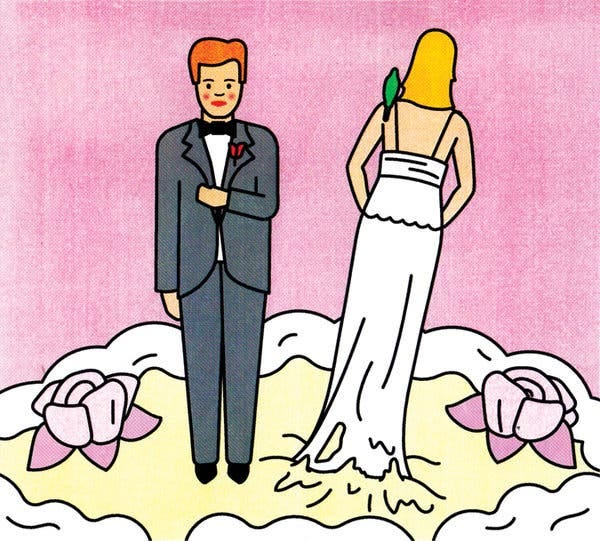
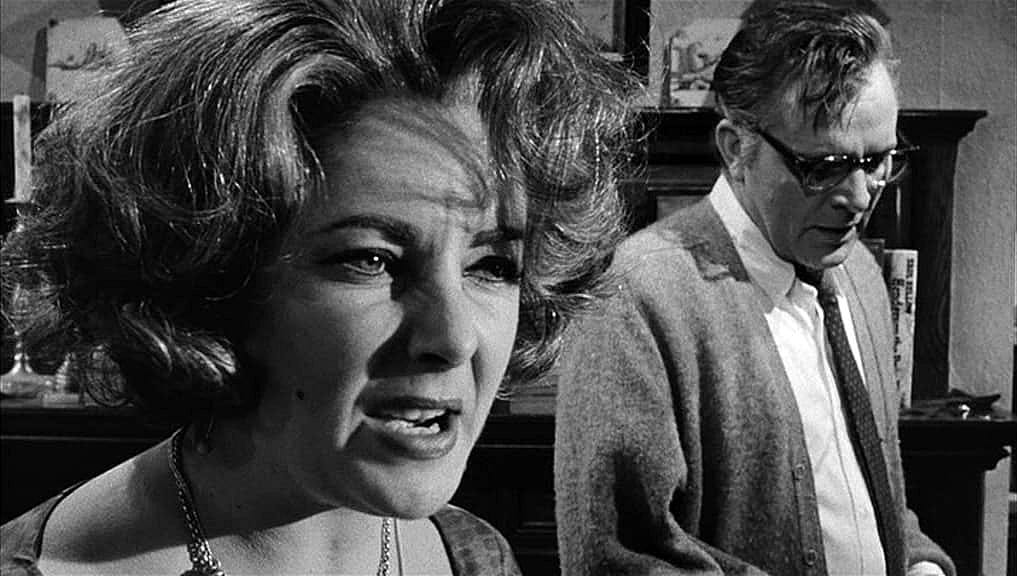
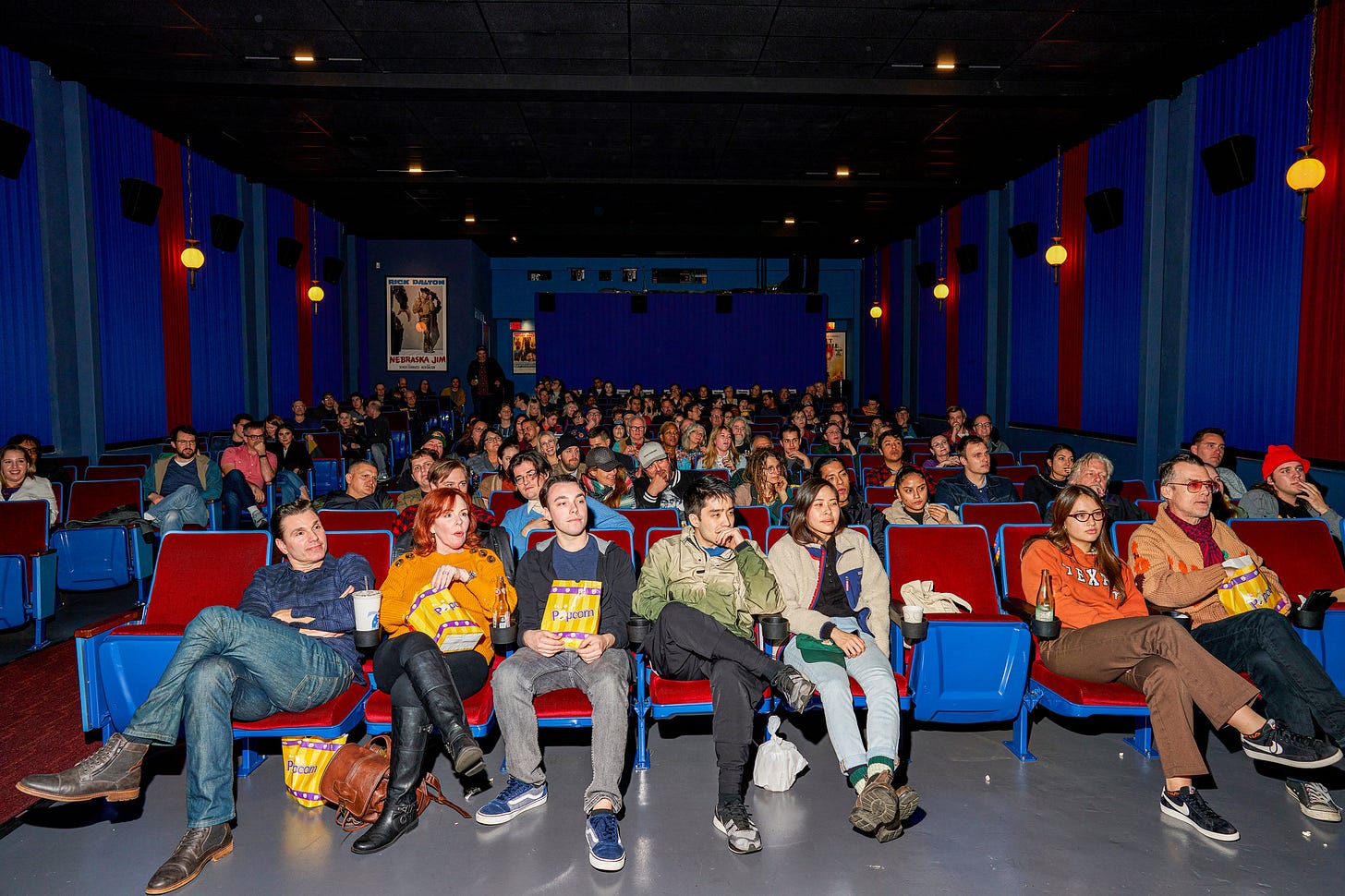
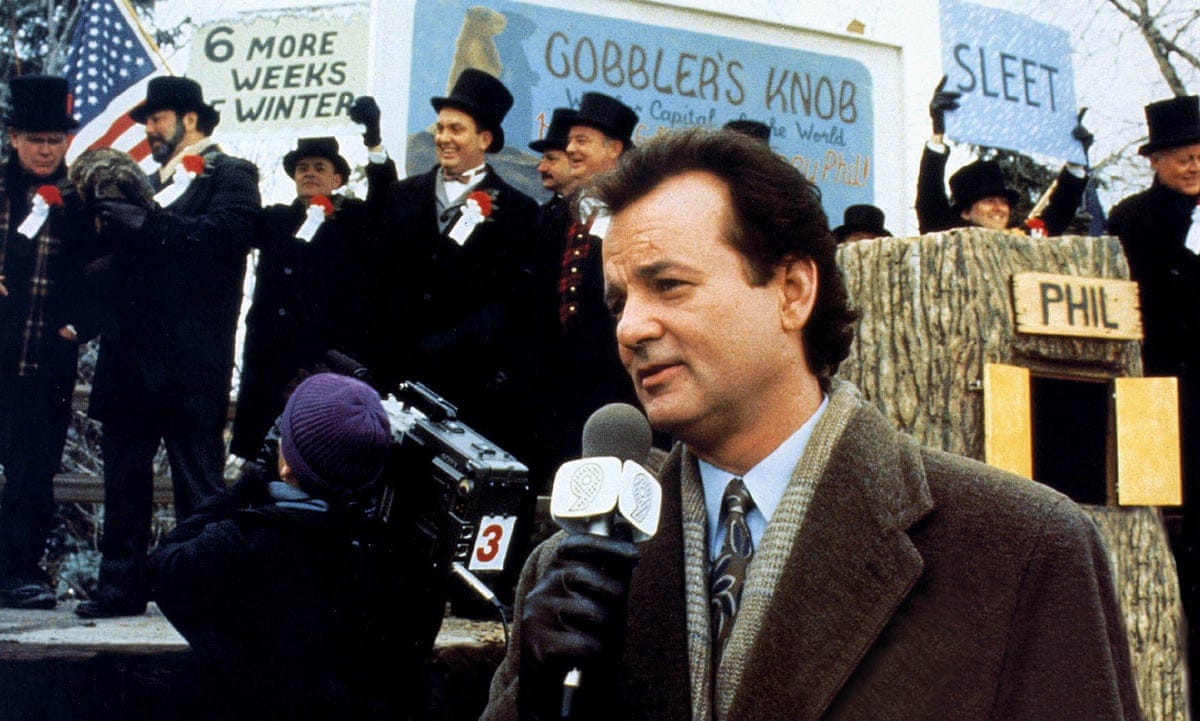
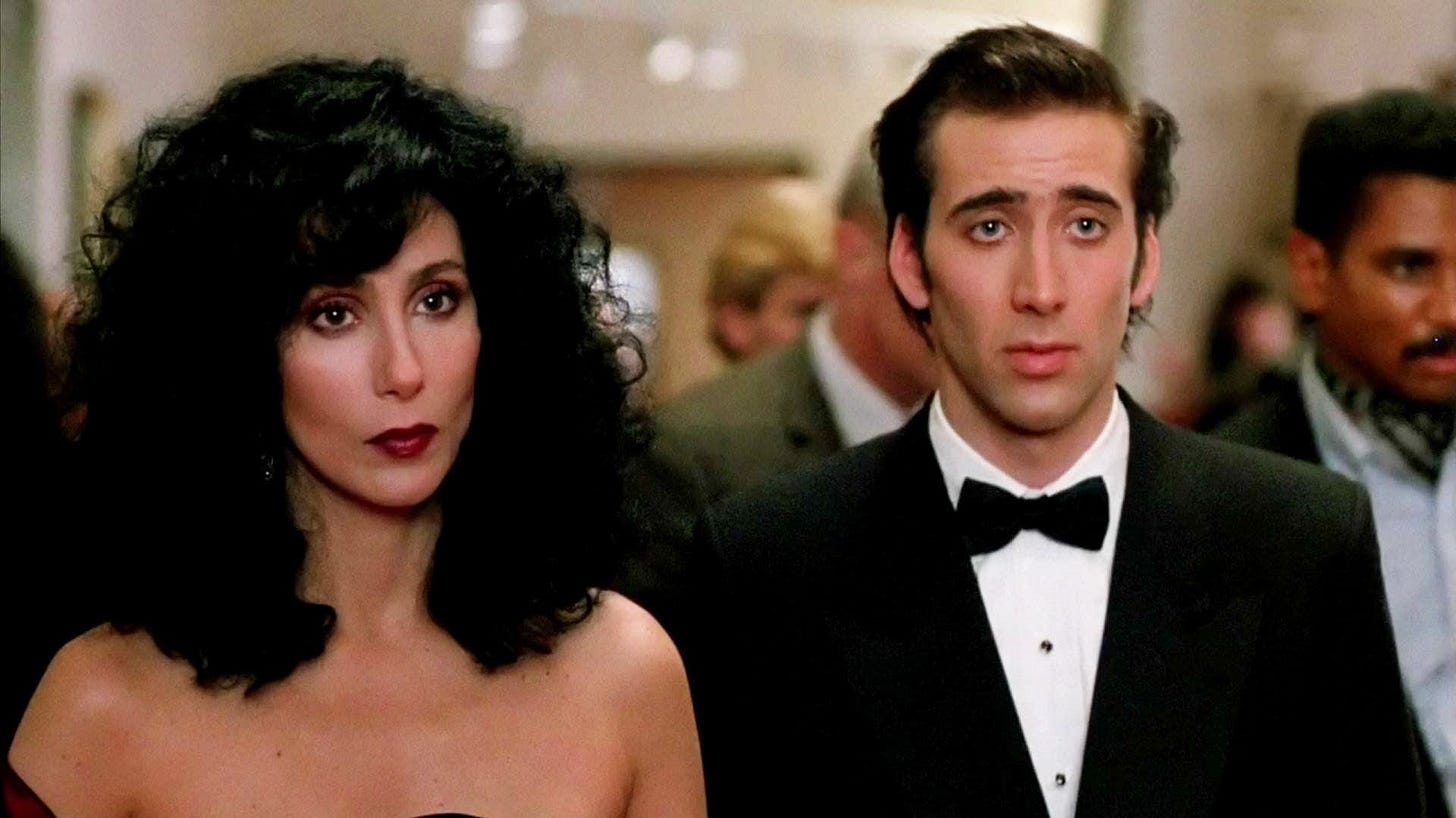
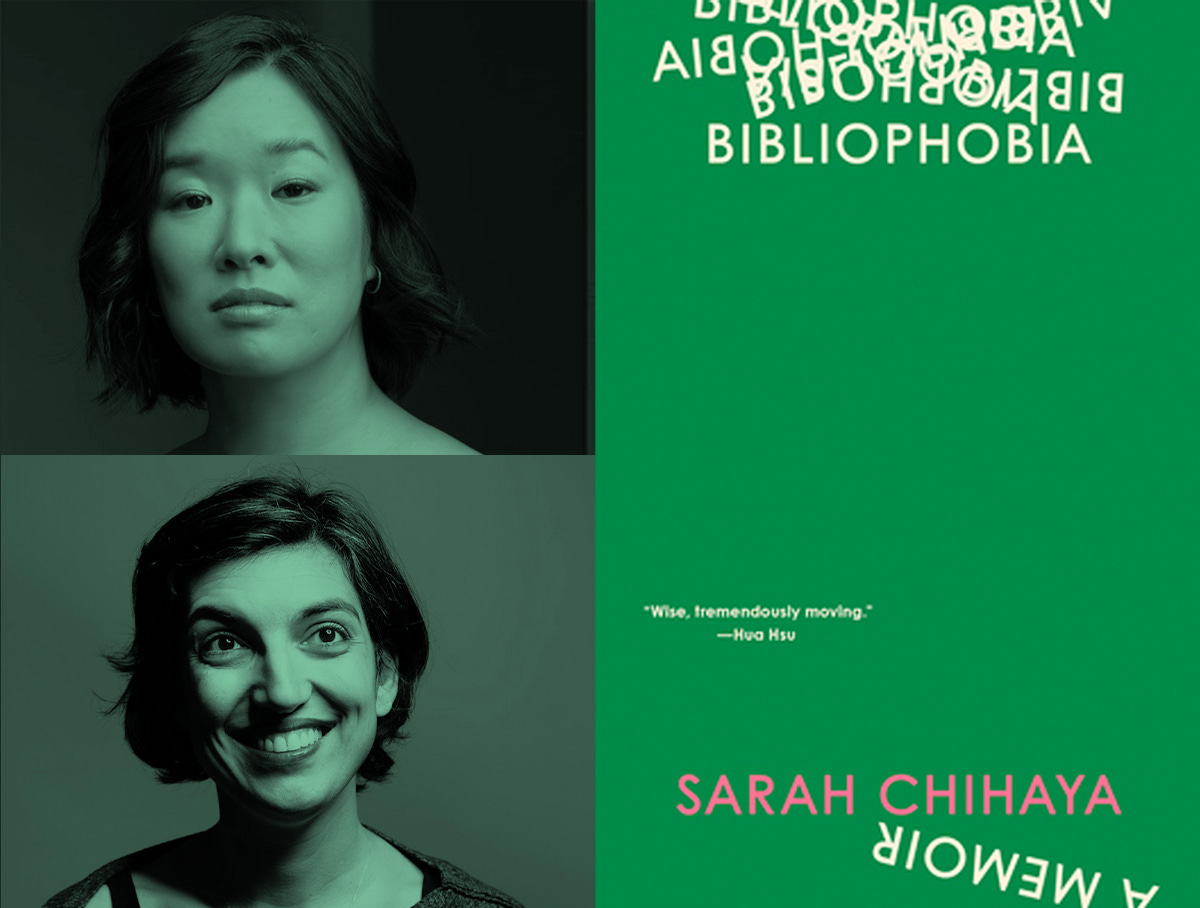






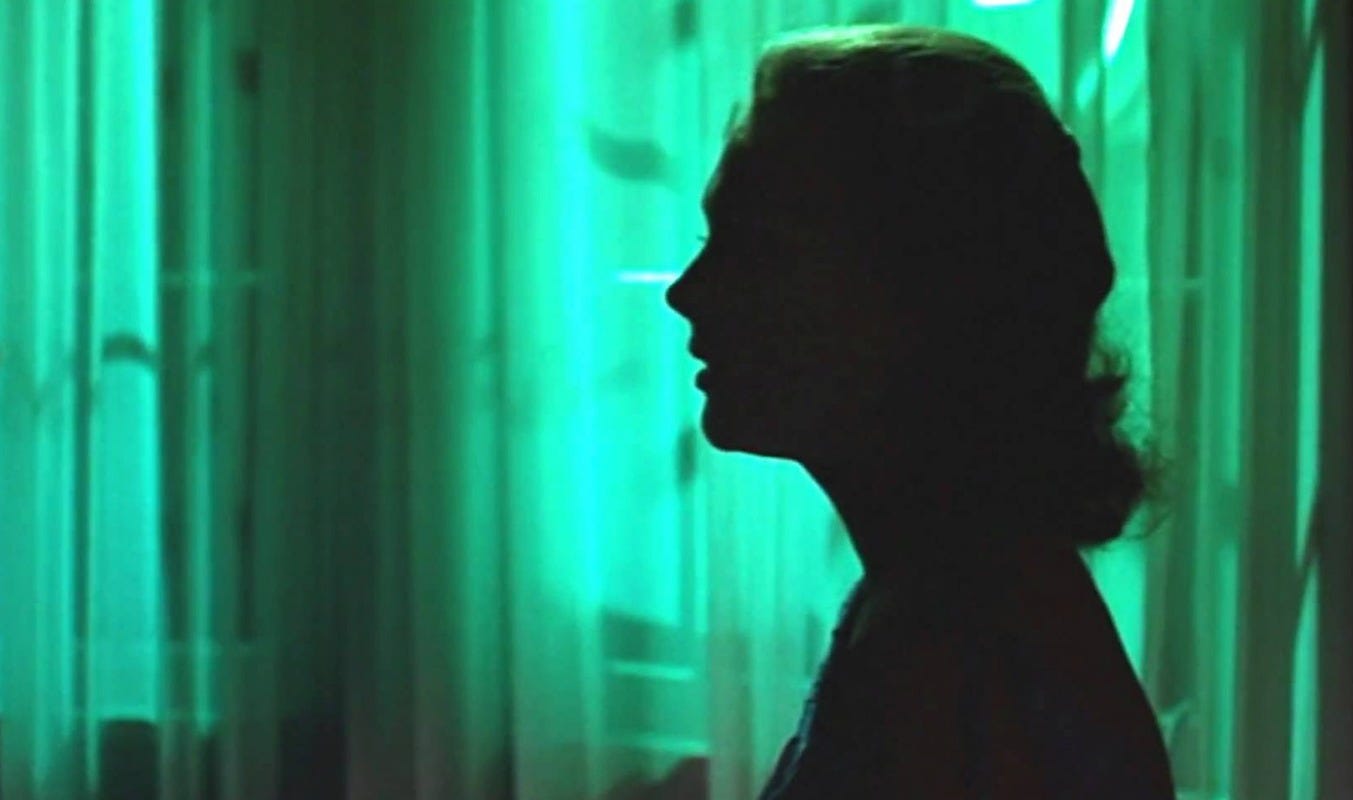
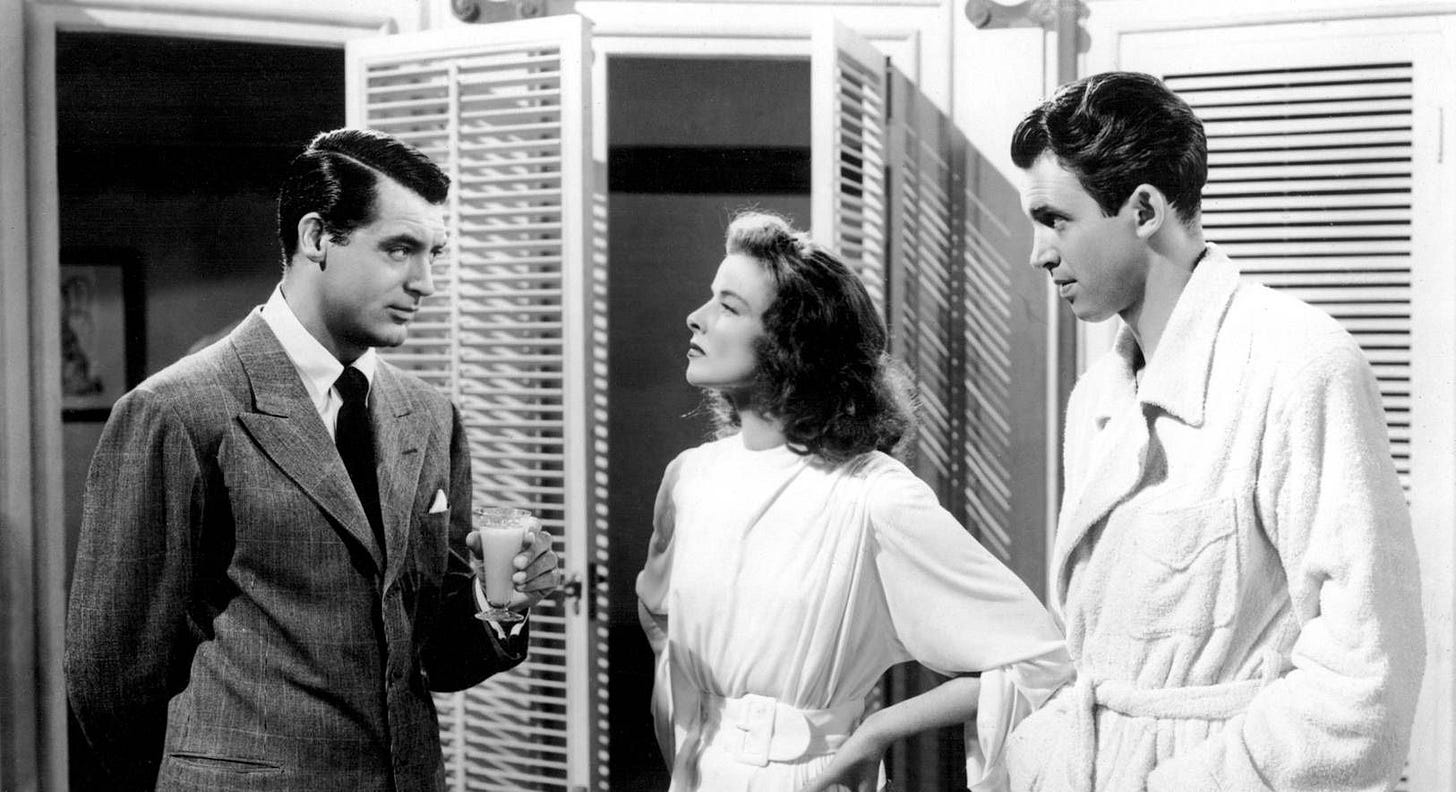



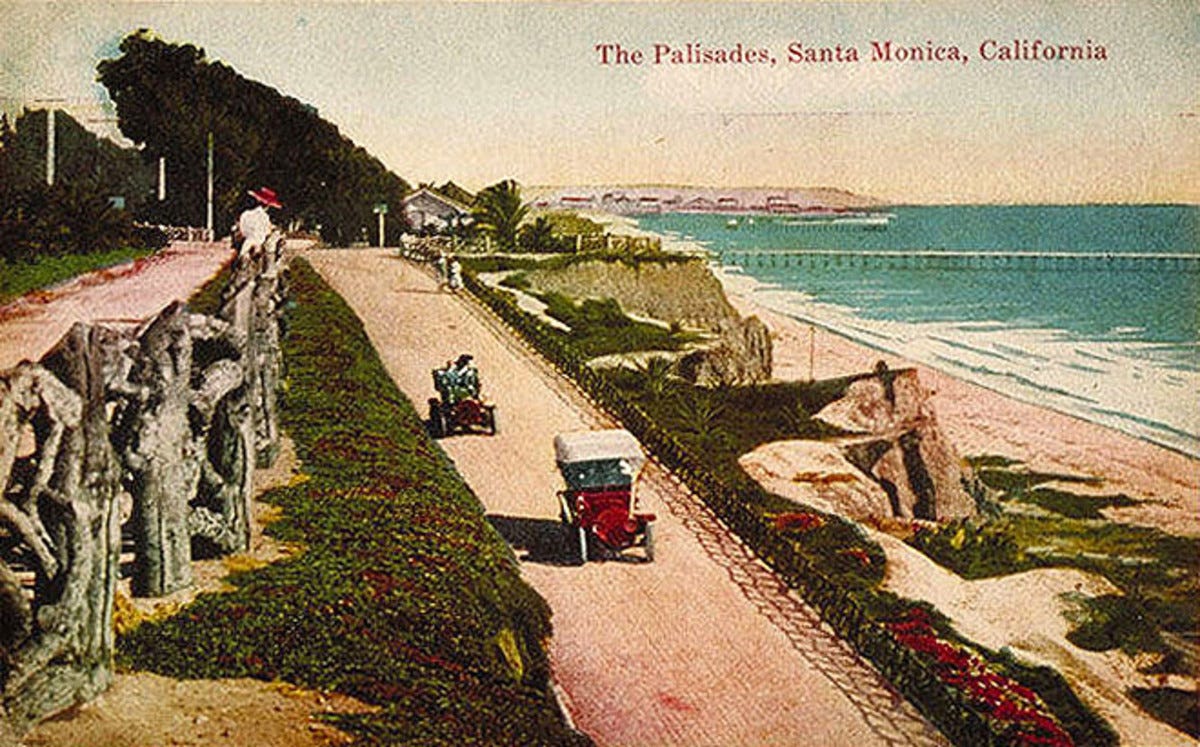

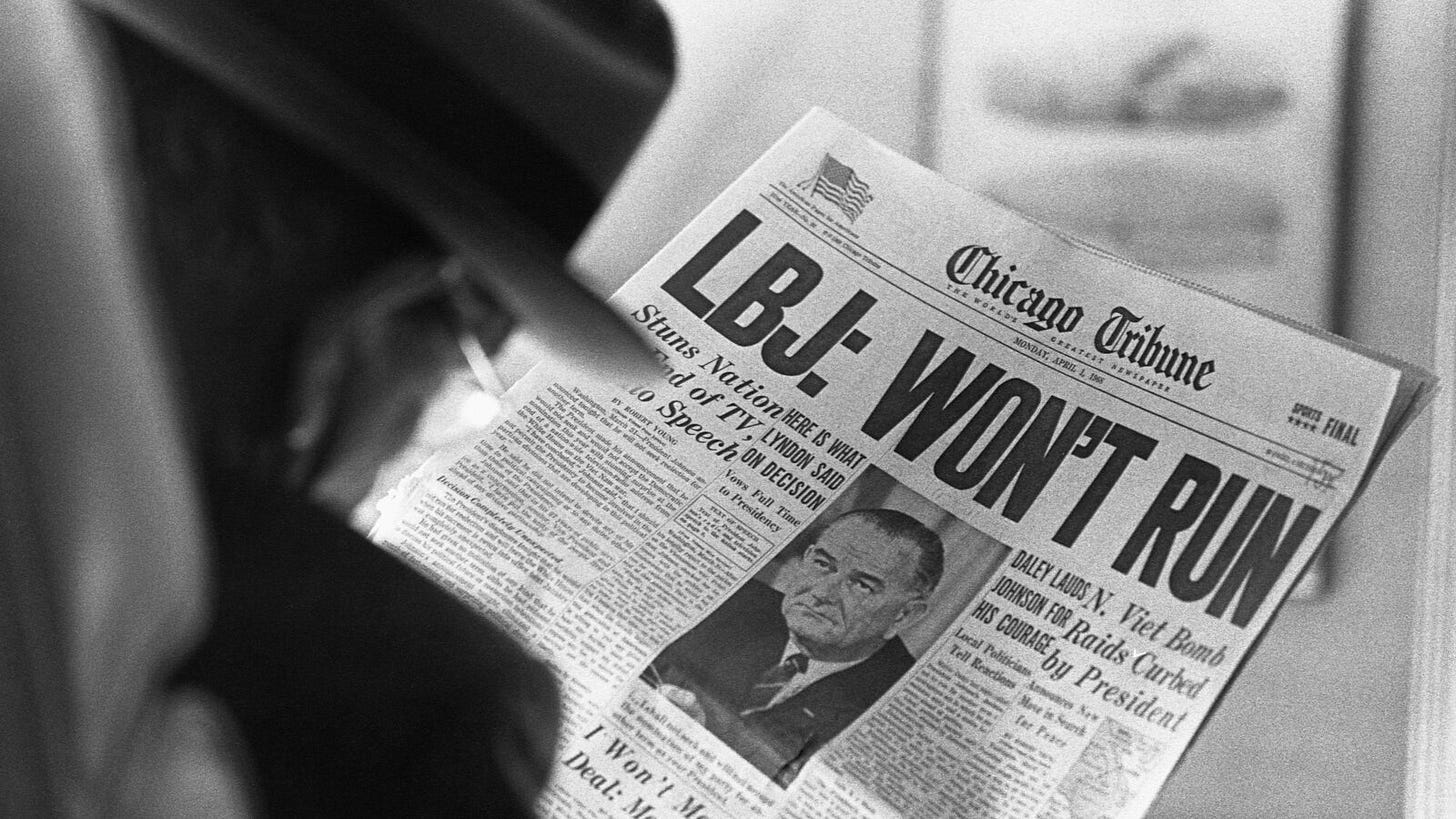
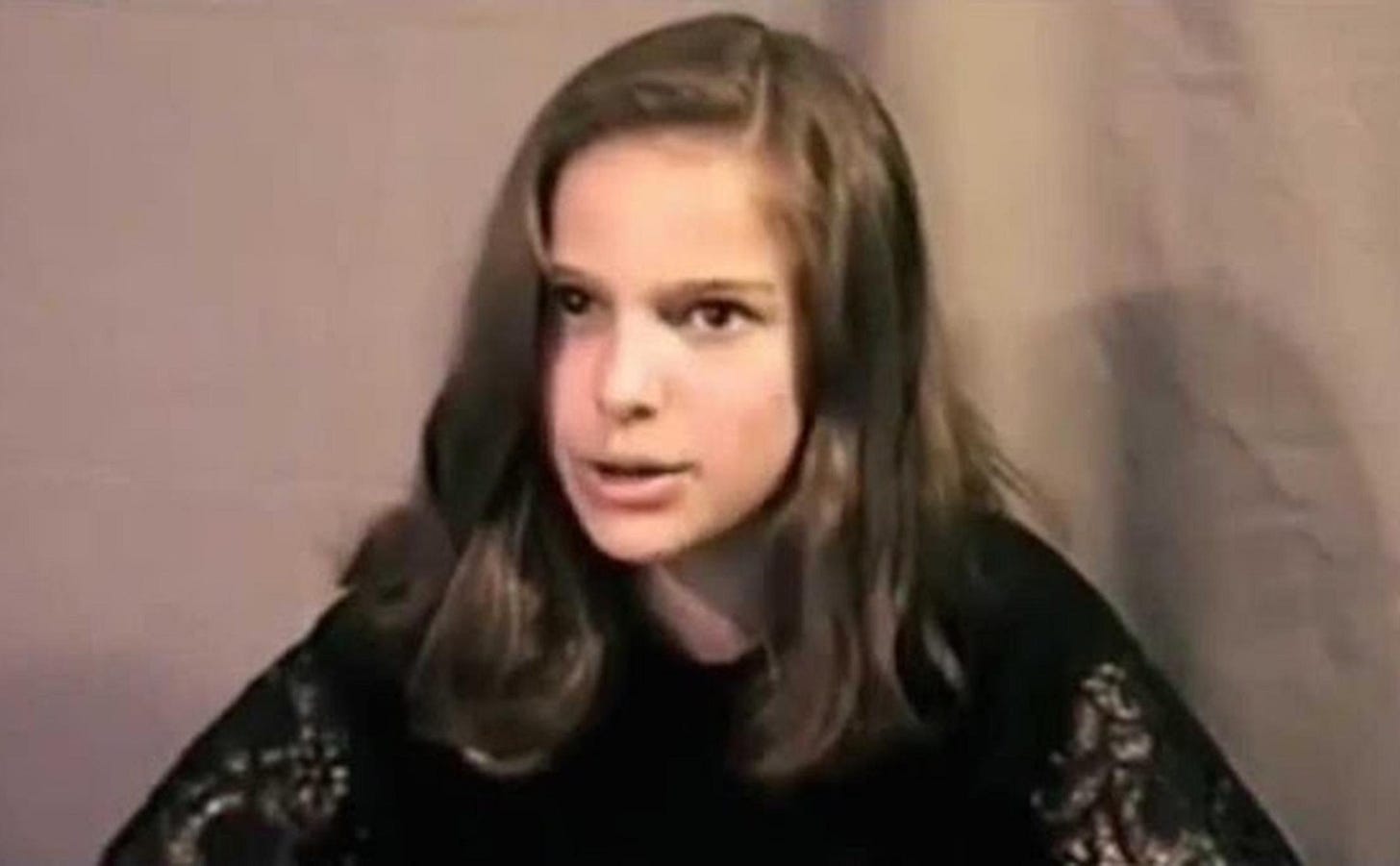

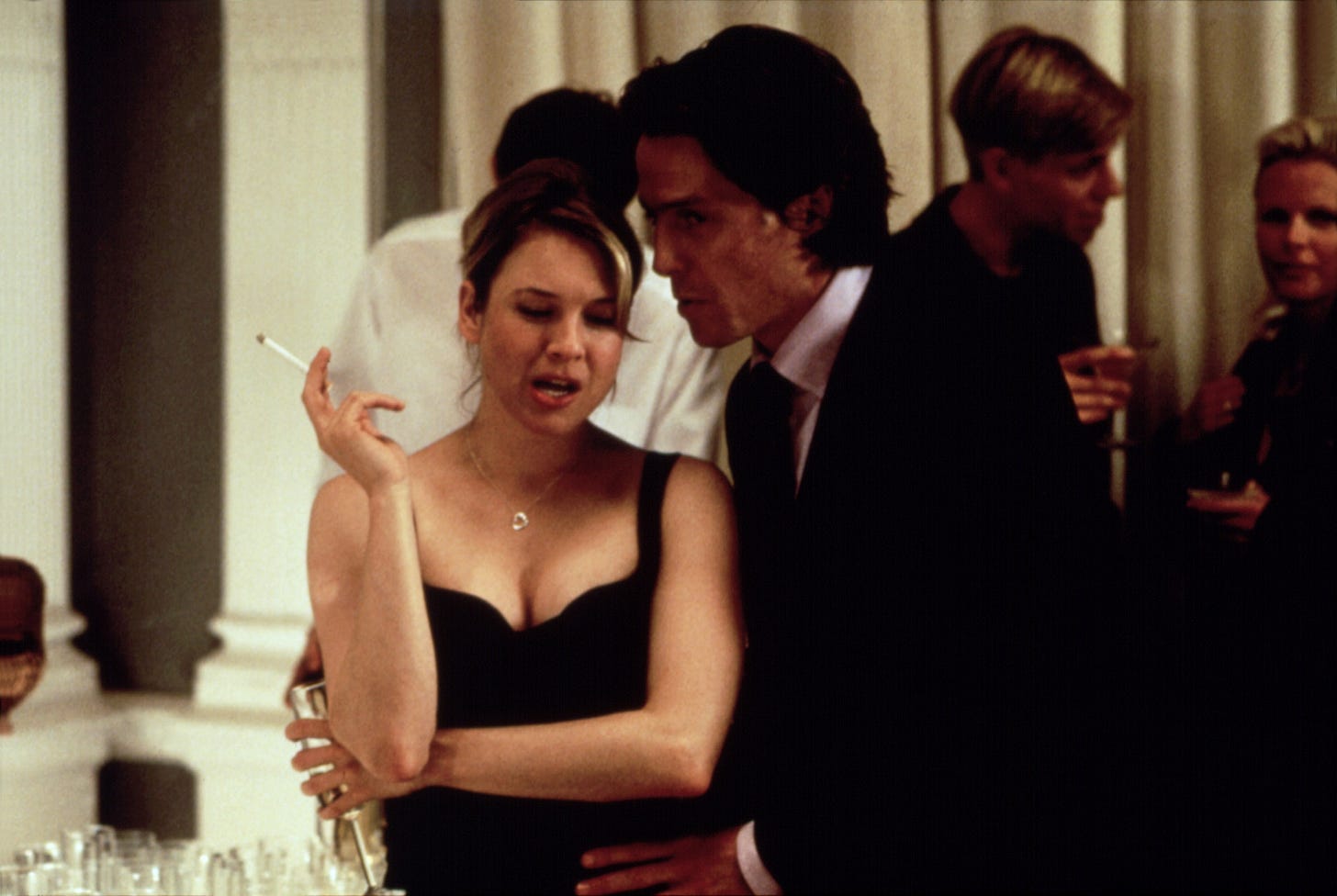





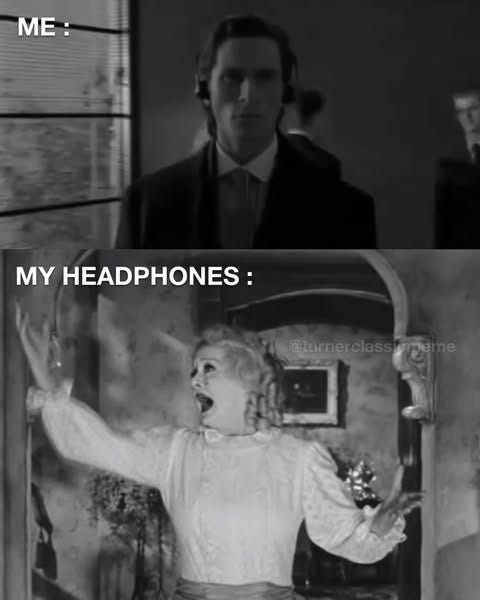
Immediately adding My Heavenly Favorite to the list (and reading it with a Tootsie Roll!)